 The California wine industry is at a fork in the road. On one path are high alcohol, oaky, “big” wines from producers large and small. On the other, wine makers are taking the road less traveled toward a more European style with a strong sense of place, lower alcohol, more finesse, and less aging in oak barrels.
The California wine industry is at a fork in the road. On one path are high alcohol, oaky, “big” wines from producers large and small. On the other, wine makers are taking the road less traveled toward a more European style with a strong sense of place, lower alcohol, more finesse, and less aging in oak barrels.
Tablas Creek Vineyards in the hills above Paso Robles in San Luis Obispo County has always taken the road less traveled, making their wines in the European tradition. Now, as they celebrate their thirtieth year, the winery is being showered with accolades for their well-made Southern Rhône Valley style wines.
 The wines are delicious blends of traditional Rhône grapes, made in the great Châteauneuf-du-Pape model with an added dash of California verve. The resulting wines have been included in numerous top 100 lists, honored with 90 point and higher scores, and have earned Winery of the Year awards from both trade and consumer publications.
The wines are delicious blends of traditional Rhône grapes, made in the great Châteauneuf-du-Pape model with an added dash of California verve. The resulting wines have been included in numerous top 100 lists, honored with 90 point and higher scores, and have earned Winery of the Year awards from both trade and consumer publications.
The top of the line Esprit de Tablas red, is a perfect example. The blend of 46% Mourvèdre, 31% Syrah, 18% Grenache, and 5% Counoise (all grown on the estate) has been rated between 92 and 98 points by folks who do that sort of thing.
The wine is dense with flavor and has a lingering finish. Bright enough to be enjoyable now, it will certainly develop more nuance with eight or ten years of rest. It may seem steep at $60 a bottle, but that is half or even a third the price of comparable cult Napa Cab or limited production Sonoma Pinot Noir.
Founded in 1989, the winery is a collaboration between two great wine industry dynasties: the Perrin family, stewards of the legendary Château de Beaucastel in Châteauneuf-du-Pape since 1909; and the Haas family, importers of wine to America.
Together, they carefully chose land in the Adelaida District west of Paso Robles twelve miles from the Pacific Ocean that most closely matched the soil and climate of the Rhône. Then they imported vines from the Beaucastle estate and began a grapevine nursery to propagate and plant their land with the exact same fruit. The results are food-friendly wines that are praised by critics and sought after by consumers.
In addition to their top-of-the line Esprit wines, they also bottle a Côtes de Tablas red and white. A little less dense and more fruit driven, these wines are also made from estate fruit. Equally praised in the wine press, they’re priced around $30 and are ready to drink now.
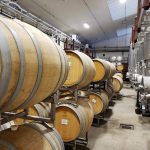 The vineyards are beautifully sited on rolling hills where the ocean air drifts through the valleys overnight to cool the grapes. The land is organically farmed and biodynamically managed with great love and care. The grounds are defined by walls made of limestone pried from the vineyard sites as they were planted.
The vineyards are beautifully sited on rolling hills where the ocean air drifts through the valleys overnight to cool the grapes. The land is organically farmed and biodynamically managed with great love and care. The grounds are defined by walls made of limestone pried from the vineyard sites as they were planted.
Weeding and vineyard maintenance is done by a herd of 200 sheep, who produce about 400 pounds of “fertilizer” a day. The flock is managed by one llama and two alpacas plus a pair of Spanish mastiffs that guard the whole lot.
Tablas Creek has a very light hand with oak-barrel aging. Only 2% of their barrels are new, really just for replacement. Like the French, they use larger barrels and even standing foudres holding 1600 gallons, equal to about 26 barrels. This yields less oak flavor and tannin and more fruit character and freshness across all their wines.
Once the vineyards were planted, Tablas Creek shared their French vine stock with neighboring vintners. Now, they’re bringing back some of those grapes to make non-estate wines labeled Patelin, French slang for neighborhood. We were particularly taken with the Patelin de Tablas Blanc priced around $25 – a bright, fresh white wine 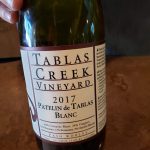 dominated by Grenache Blanc and Viognier.
dominated by Grenache Blanc and Viognier.
Tablas creek wines follow the Châteauneuf model of blending for flavor. Up to thirteen grape varieties might be included. Reds are made principally from Mourvèdre, Grenache Noir, Syrah, and Counoise. White wines use Roussanne, Viognier, Marsanne, Picpoul Blanc, and Grenache Blanc. They’ve finally been able to plant all thirteen varieties at Tablas Creek. Wine is being made from all, but some in very small quantities.
 Tablas creek wines are available in Connecticut, but in very limited quantities. Your best bet might be to keep an eye on restaurant wine lists. Ancona’s wines in Wilton can order Tablas Creek wines including: Esprit de Tablas red $60, Patelin de Tablas white $25, and Patelin de Tablas red, $15.
Tablas creek wines are available in Connecticut, but in very limited quantities. Your best bet might be to keep an eye on restaurant wine lists. Ancona’s wines in Wilton can order Tablas Creek wines including: Esprit de Tablas red $60, Patelin de Tablas white $25, and Patelin de Tablas red, $15.
The winery has excellent wine clubs with membership privileges that include some of the limited production wines. Alas, Connecticut prohibits direct shipments from wineries. If you have an out-of- state address, then join the club.
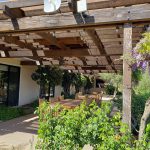 Best of all is a visit to the winery. Leaving highway 101 you cross wildflower meadows and horse pastures. Climbing into the hills the road passes through live oak forest until the hilltop vineyards appear. Bring a sweater, it will be cooler than in the valley.
Best of all is a visit to the winery. Leaving highway 101 you cross wildflower meadows and horse pastures. Climbing into the hills the road passes through live oak forest until the hilltop vineyards appear. Bring a sweater, it will be cooler than in the valley.
Tablas creek has a large tasting room and a pergola covered patio overlooking the vineyards. After tasting, plan for dinner and an overnight in Paso Robles. Bring your bottle of Tablas Creek wine. The restaurants will welcome it.
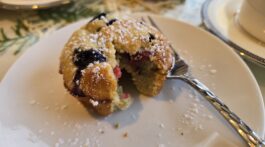








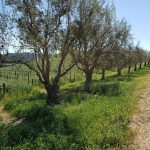
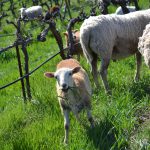
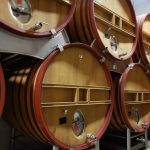
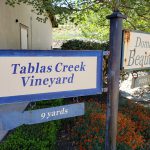
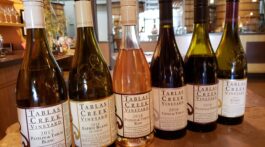

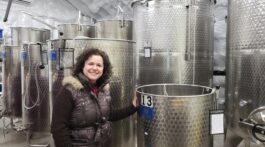
No Comment